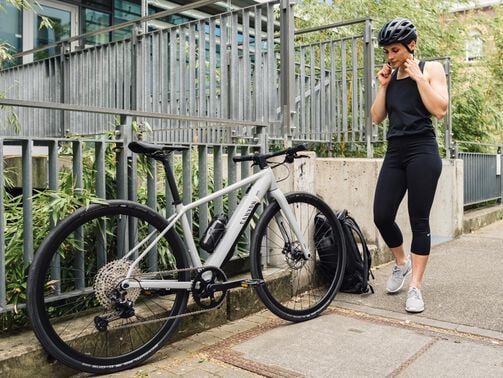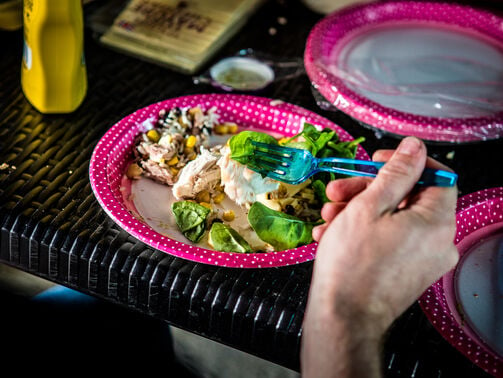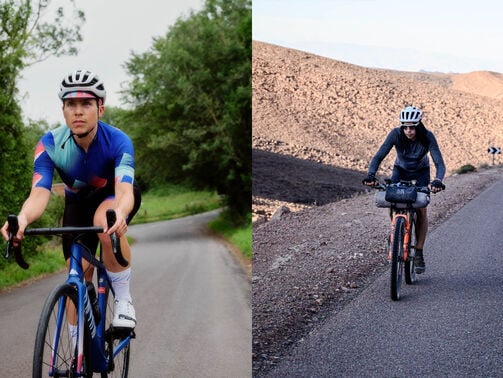Bike riding to lose weight: How high is your calorie consumption when cycling?
Cycling not only gets your heart and circulation moving, but also stimulates calorie consumption.

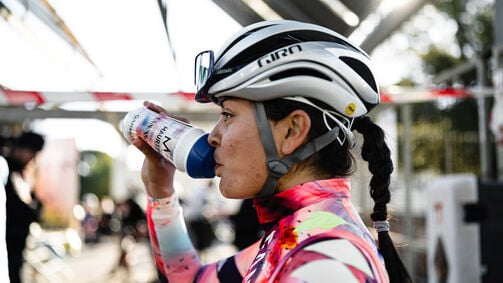
A few minutes of cycling increases your heart rate, boosts your blood circulation, and stimulates calorie consumption. We'll explain how many calories you burn riding a bike and the distances required to reach your specific calorie consumption targets.
Get into gear: bike rides burn calories
Endurance sports are great for burning calories, and cycling can be integrated into your daily routine much easier than most. By cycling regularly, you reduce the risk of cardiovascular disease and high blood pressure by more than 60 per cent. When you ride a bike, your heart pumps up to 1.5 more litres of blood per minute around your body and organs, which uses energy and helps you lose weight.
For many people, daily commutes to work, school or university can be fun and active on sunny days at first, but then you’ll realise that basic kit will make the rainy days invigorating too. Embrace your independence from traffic jams, save petrol or bus money, and burn fat. Road bikes, MTBs, gravel bikes, hybrid bikes, Dutch bikes and other bikes are effective in aiding weight loss, but more so if you’re enjoying yourself. Pannier racks are easy to fit to many bikes so that you can carry whatever you need for the day.
Once you’ve integrated bike riding into your daily routine you may ask yourself ‘how many calories do I burn bike riding?’. Read on to find a few tips on how to estimate and optimise this.
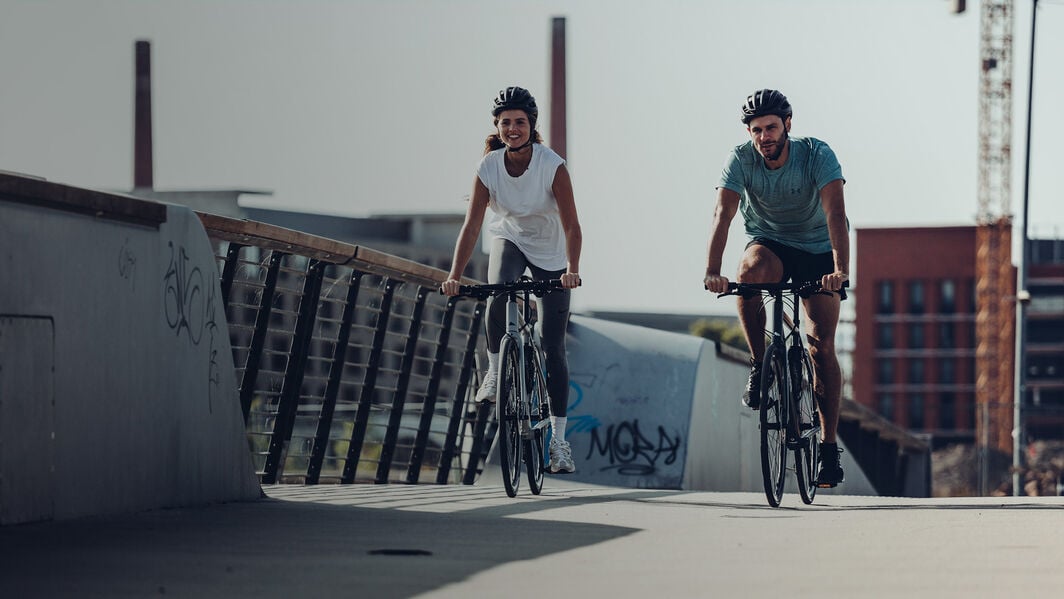
How many calories does riding a bicycle burn?
Endurance exercise, like jogging or swimming, for more than 30 minutes can improve your fitness and help you lose weight. Running for half an hour can burn between 250 and 500 kilocalories. Swimming burns between 300 and 400 kcal in the same amount of time, with a front crawl burning up to 450 kcal.
So how many calories does cycling burn? Depending on how and where you ride, you will burn between 100 and 650 kilocalories (kcal) per hour while cycling. Professionals achieve the most intensive calorie consumption during demanding cycling races such as the famous Tour de France. On long stages at top speed, their metabolism converts several thousand kilocalories.
Why is cycling so healthy?
Riding a bike for more than half an hour stimulates your cardiovascular system and strengthens small muscles and large muscle groups. On a bicycle, about 80 per cent of your body weight rests on the saddle, which drastically reduces the load on the body compared to other sports. For this reason, cycling works well for most people, including those who might struggle to participate in other activities, for example, those who are overweight, have debilitating injuries or have other health problems.
The smooth pedalling motion is easy on your back, cartilage, and joints. At the same time, the leg and buttock muscles get a perfect workout. Mountain biking is ideal if you want to work the rib, back, and other upper body muscles which are activated to stabilise and maintain balance on the trails and around corners. When you land after a jump, your leg and arm muscles compensate for the impact of the landing.
Tip: In our guide to cycling for a healthy back, you can learn how to adjust your bike and your posture to make your ride easier and keep you riding happily for years to come.
How fast do you need to cycle for a high-calorie burn?
How many calories you burn in an hour of riding a bicycle depends on your speed and other factors. As a rule of thumb, you’d achieve the following calorie consumption during 60 minutes of cycling:
- Speed up to 15 km/h ≈ 300 kcal
- Speed up to 18 km/h ≈ 420 kcal
- Speed up to 22 km/h ≈ 600 kcal
- Speed up to 28 km/h ≈ 850 kcal
- Speed over 28 km/h ≈ 1,000 kcal
Half an hour on the bike at 18 km/h burns about 210 kcal. If you want a bike ride calorie burn of 1,000 kilocalories at that same speed, you’d need to maintain that pace for about 2.5 hours.
How many calories does riding a bike burn per kilometre?
Distance alone does not say much about calorie consumption - the decisive factor is how fast you go or how much effort you put in. The profile of the route and the headwind will have a significant impact on this. For example, at full pelt on a racing bike, you will burn fewer calories over 10 km than when cycling 40 km on a trekking bike at a leisurely 15 km/h. The following average values for calorie consumption at medium cycling speeds give some idea of how distance relates to calories burned:
- 1 km ≈ 23 kcal
- 10 km ≈ 230 kcal
- 20 km ≈ 460 kcal
- 25 km ≈ 575 kcal
- 30 km ≈ 690 kcal
- 40 km ≈ 920 kcal
- 80 km ≈ 1840 kcal
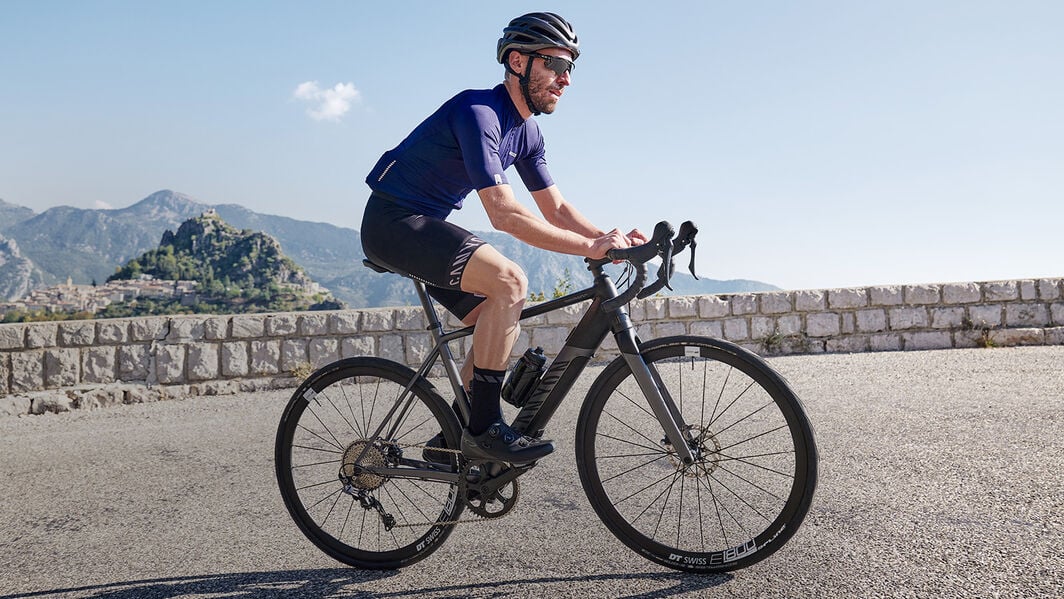
What influences calorie burned while bike riding?
Here's an overview of the most important factors influencing the number of calories you burn on your bike ride.
- Intensity:
Do you train hard or prefer a leisurely pace? The more effort you put into pedalling, the higher your pedalling force, cadence, speed, and calories burned.
- Fitness-Level:
Are you new to cycling or exercise, or do you already have a solid muscle mass? Gaining muscle increases energy expenditure on bike rides because muscle burns more calories than fat. You can lose weight more effectively with the resulting higher basal metabolic rate.
- Type of route:
Do you seek out flat routes or head for the hills on your rides? Routes with climbs are optimal for increasing calorie consumption compared to flat sections. As soon as you ride your bike briskly uphill, more calories are burned due to the increased energy consumption of your muscles. The terrain will affect how hard you work and how fast you can go, with traffic lights, potholes and other road users all affecting your calorie burn.
- Wind conditions:
Cycling into a headwind - curse or blessing? A headwind may not affect mountain bike trail riders, but out on the open road, you’ll see cyclists going into the wind, tucked into their handlebars with determination, and their counterparts going the other way sitting upright and relaxing at high speed. But, if posture is correct, the harder you work to overcome resistance when pedalling, the greater the number of calories burned bike riding will be as a result.
- Physique:
Age, gender, and weight affect how many calories you burn while cycling. Cyclists' energy requirements and energy consumption differ for the same distance and speed depending on the proportion of muscle mass and fat tissue, hormone levels and other physiological characteristics.
Fat burning with the right heart rate
For optimal calories burned bike riding, we recommend that you always train at the correct heart rate. With a heart rate monitor or a bike computer that monitors heart rate, you can observe your heart rate throughout your bike ride. To stay in the fat-burning zone, your heart rate should be 60 to 70 per cent of your maximum heart rate. You can easily calculate how high it should be with the help of this formula:
- For women: (226 - age) * 0.6 (60%) or 0.7 (70%)
- For men: (220 - age) * 0.6 (60%) or 0.7 (70%)
For example, the ideal fat-burning heart rate for a 38-year-old woman is between 113 and 132 beats per minute. For a 38-year-old man, the range is between 109 and 127 beats per minute. We recommend consulting with your doctor or sports physician if you are unsure what your correct training heart rate is or if you suffer from health problems. They might invite you to do a performance test using sensors to quickly determine your fitness level and optimal training pulse.
Cycle training in the aerobic or anaerobic range?
To make a lot of energy available during swift and high-intensity activities such as running 100 metres, the body primarily burns carbohydrates. Then it increasingly resorts to burning fat over more extended physical efforts, such as running 10 km. These two types of energy supply both rely on the turnover of oxygen.
Aerobic zone
If you train in the aerobic metabolism range, your body always has enough oxygen available. Your muscles gain the required energy from the inhaled atmospheric oxygen and simultaneously burn fat and the carbohydrate glycogen. The resulting CO2 is carried by the blood and exhaled through the lungs. When cycling at medium speed, you breathe faster than you would at rest, but you are not out of breath and can still talk without any problems.
Aerobic threshold
If the load condition of your body is increased by more intensive cycling, further carbon dioxide is produced in your muscles, and it can no longer be exhaled through the lungs in the same amount of time. The CO2 content of the blood therefore increases. Glycogen is no longer wholly burned in the muscle, and lactate is released - a condition known as aerobic threshold, in which your body continues to break down and transport the glycogen residues without any problems. At the aerobic threshold, the lactate level in the blood does not rise further – it is a "steady state".
At what point further lactate increase occurs depends on the fitness level of the cyclist. For inexperienced cyclists, the aerobic threshold may be at 60% of the maximum heart rate, whereas for professionals, it starts at 85%. But it averages between 80 and 90% for most. You have reached the anaerobic point when you cycle at the highest training intensity without triggering a significant increase in lactate concentration. The fitter you are, the further and faster you can go before you reach this threshold.
Anaerobic zone
You only train in the anaerobic zone for short periods, as you are cycling at peak performance. Your body does not have enough oxygen for energy production, and carbohydrate storage is exhausted after a short time. Although the process known as glycolysis is twice as fast, a large amount of lactate accumulates in the bloodstream, which results in a rapid decline in performance, muscle burn and exhaustion. In addition, muscle hardening is possible afterwards, so stretching and cooling down are essential to reduce the risk of injuries.
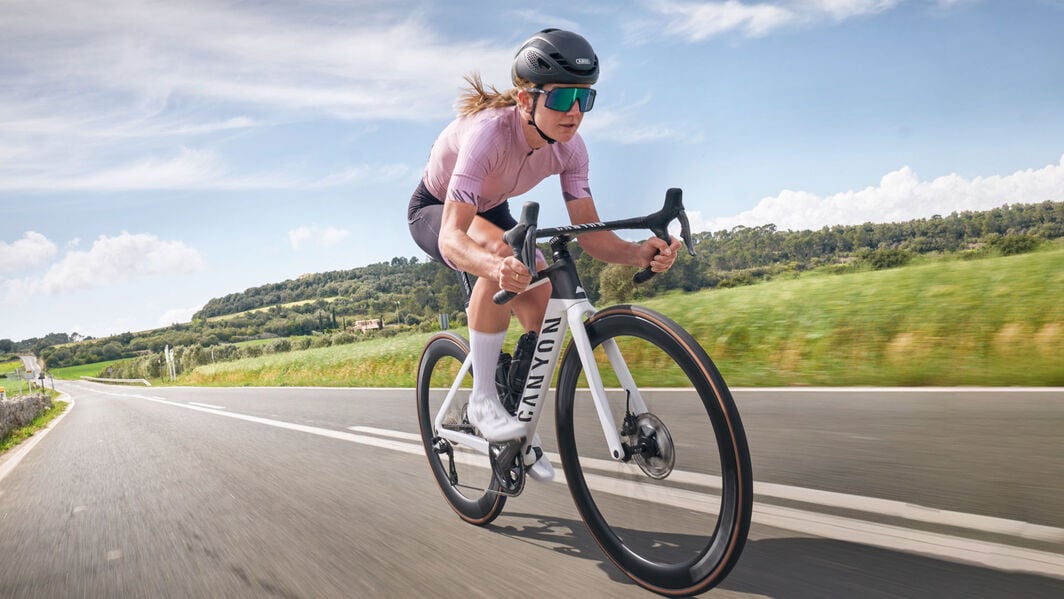
Exercise combined with a balanced diet is the key to losing weight
A calorie deficit is necessary to lose weight permanently: You must burn more calories than you take in. However, it is essential not to take in too few calories as your body may start to reserve them, resulting in a loss of muscle mass. Every calorie consumed is then stored as fat which is how the body ensures that it can maintain vital functions such as breathing, blood circulation or digestion in the long term despite the food shortage. In many crash diets, this is how the infamous yo-yo effect sets in.
The body’s energy requirement to maintain vital processes in a state of rest is called the basal metabolic rate. The power metabolic rate is the energy it needs for any activity over and above the basal metabolic rate. The sum of basal and power metabolic rates is the total energy metabolic rate.
You can lose weight sustainably by keeping your calorie intake a little below the total energy metabolism over time. To do this, you can increase your energy consumption by doing more physical activity or reduce your energy intake by eating healthier. It's best to pay attention to both exercise and diet simultaneously. You can lose weight effectively and permanently without experiencing the yo-yo effect. If you want to maintain weight, your calorie intake and total energy expenditure should balance.
How to calculate your basal metabolic rate using the Harris-Benedict formula
Determining your daily basal metabolic rate is the first step in calculating your calorie needs.
With the Harris-Benedict formula, you can do this without a calorie calculator:
- Women: 655.1 + (9.6 * body weight in kg) + (1.8 * height in cm) - (4.7 * age)
- Men: 66.47 + (13.7 * body weight in kg) + (5 * height in cm) - (6.8 * age)
Calculation example: A 33-year-old man, 185 cm tall, and weighing 80 kg has a calculated basal metabolic rate of 1,863 kcal. For a 33-year-old woman of the same height and weight, the individual basal metabolic rate is 1,601 kcal.
How to calculate your total energy expenditure
In addition to the basal metabolic rate or resting energy requirement, there is the power metabolic rate, i.e., the energy required for any activity. The power metabolic rate can vary depending on whether you have a physical or sedentary job and how active you are in your free time.
Therefore, the basal metabolic rate is multiplied by a physical activity level (PAL) to determine the total energy requirement. According to the German Nutrition Society (DGE), the PAL value is between 1.2 (lying or sitting) and 2.4 (heavy physical work). For office jobs, a PAL value of 1.4 to 1.5 is assumed. For predominantly walking or standing positions, such as in catering or sales, the PAL value is 1.8 to 1.9. Those who exercise four to five times a week for 30 to 60 minutes can increase the value by 0.3.
Calculation example: The man from the previous example has an office job (1.5) but rides his bike to work and home every day (+ 0.3). He multiplies his basal metabolic rate of 1,863 kcal per day by the PAL value of 1.8 to determine his total energy requirement, which is 3,353 kcal per day.

How can you eat properly and healthily?
To give your body just what it needs, we recommend you take in a lot of fluid and eat a balanced diet. Ideal drinks are unsweetened teas, water and - in moderation - pure fruit juices. In addition, you can eat plenty of fruits and vegetables, good fats, and foods rich in protein and fibre. On the other hand, sugary foods such as chocolate or soft drinks should be consumed infrequently and in small quantities. The same applies to fatty, heavily salted foods such as fast food or potato chips.
As a rough guide, you should aim to eat the following:
- 40 to 45 % carbohydrates
- 30 % healthy fats
- 25 to 30 % proteins
Our 3-point rule of thumb will help you eat healthily and enjoyably whilst reaching your fitness goals:
- Breakfast fills your energy tank for the day, so choose foods rich in carbohydrates.
- At lunchtime, you can feast on whole foods rich in vital substances. It provides your body with the nutrients it needs and maintains performance without being too heavy on the tum.
- In the evening, focus on proteins in your meal, with as few carbohydrates as possible.
How many calories do you burn when riding an e-bike?
Riding an e-bike or pedelec, you can still burn loads of calories, but you’ll go faster, further and with more ease than you would on a conventional bike. The decisive factor for the number of calories you burn is the selected level of motor assistance. When cycling without electric assistance, your calorie consumption is the same as on a conventional bicycle. The more you engage the motor assistance, the less your muscles will work, and your calories burned will decrease accordingly.
When riding an e-bike, the number of calories burned changes as a percentage of the motor assistance used. If the motor does half of your work, you only have to pedal half as hard, and therefore you only burn 50% of the calories. In one hour of cycling, you burn around 250 kcal, whereas the average calorie consumption without motor assistance is 500 kcal.
You can find out more about this topic in our guide to calorie consumption with an e-bike.
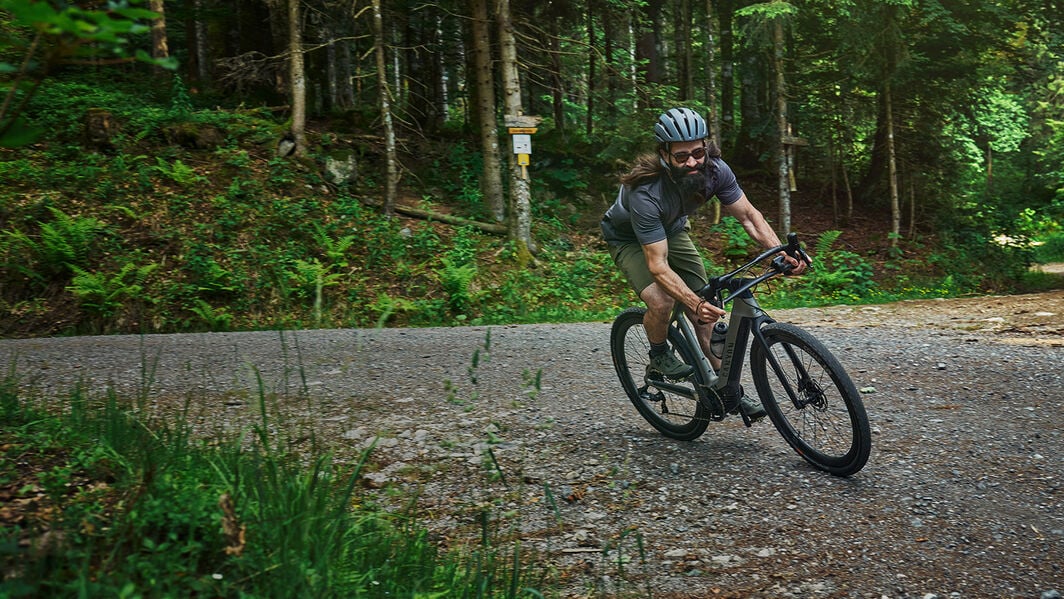
How does the calorie consumption differ between a road bike, city bike and MTB?
The number of calories burned riding a bike is not determined by the type of bike you ride but by the intensity with which you ride it. It's hard to directly compare the different types of bikes, as they are designed for very different terrains.
For example, on the road, you will burn fewer calories on a road bike than on a mountain bike. Due to their geometric frames and narrow tyres, road bikes are extremely aerodynamic and have low rolling resistance. For this reason, Canyons’ racing bikes, like the Aeroad, are among the fastest bikes in the world. MTBs are made for tough off-road rides, so their wide, treaded tyres offer you decent grip but provide a higher frictional resistance on the road, so you'd have to use more power on a mountain bike than on a road bike, and you’d burn more calories.
Tip: If you want to increase how many calories you burn riding a bike, you can add more weight to your bike. This increases the total weight that has to be moved and, therefore, the friction you must overcome by pedalling. You’ll feel it, particularly on the climbs. Our practical bike bags, backpacks and trailers allow you to take your tent, climbing gear and other kit on your mountain bike easily, though the extra weight will still increase your workload and calorie burn.
